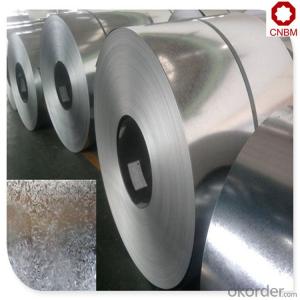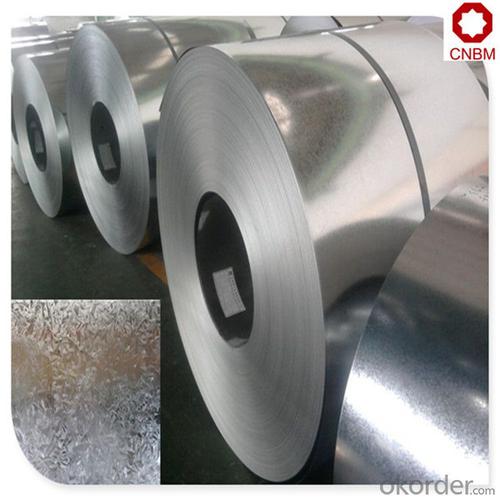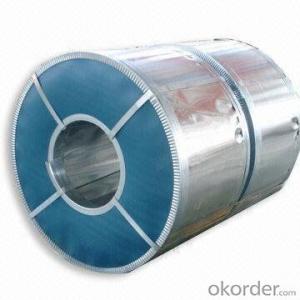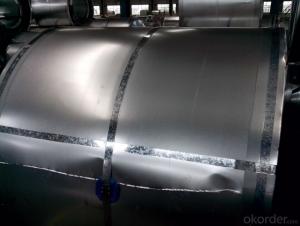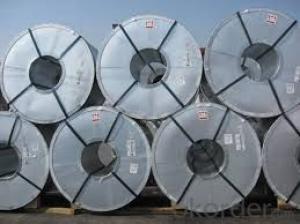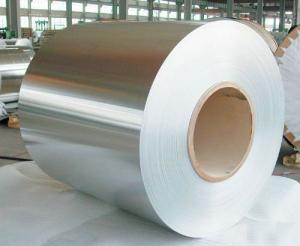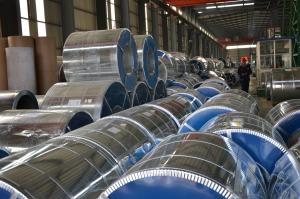Galvanized steel coil z275 stander hot dipped
- Loading Port:
- China main port
- Payment Terms:
- TT OR LC
- Min Order Qty:
- 25 m.t.
- Supply Capability:
- 36782 m.t./month
OKorder Service Pledge
OKorder Financial Service
You Might Also Like
Specification
Hot-dip galvanized steel coils are available with a pure zinc coating through the hot-dip galvanizing process. It offers the economy, strength and formability of steel combined with the corrosion resistance of zinc. The hot-dip process is the process by which steel gets coated in layers of zinc to protect against rust. It is especially useful for countless outdoor and industrial applications. Production of cold formed corrugated sheets and profiles for roofing, cladding, decking, tiles, sandwich walls, rainwater protective systems, air conditioning duct as well as electrical appliances and engineering.
Main Features of the Hot-Dip Galvanized Steel Sheet:
• Excellent process capability
• Smooth and flat surface
• Workability, durability
• Excellent anticorrosive property
• High strength
• Good formability
• Good visual effect
Technology test results:
Processability | Yield strength | Tensile strength | Elongation % | 180°cold-bending |
Common PV | - | 270-500 | - | d=0,intact,no zinc removal |
Mechanical interlocking JY | - | 270-500 | - | d=0,intact,no zinc removal |
Structure JG | >=240 | >=370 | >=18 | d=0,intact,no zinc removal |
Deep drawn SC | - | 270-380 | >=30 | d=0,intact,no zinc removal |
EDDQ SC | - | 270-380 | >=30 | d=0,intact,no zinc removal |
Standard and Grade :
Hot-dip galvanized steel coils | ||||
ASTM A653M-06a | EN10327:2004/ 10326:2004 | JISG 3302-2010 | AS-NZS 4534-2006 | |
Commercial quality | CS | DX51D+Z | SGCC | G1+Z |
Structure steel | SS GRADE 230 | S220GD+Z | SGC340 | G250+Z |
SS GRADE 255 | S250GD+Z | SGC400 | G330+Z | |
SS GRADE 275 | S280GD+Z | SGC440 | G350+Z | |
SS GRADE 340 | S320GD+Z | SGC490 | G450+Z | |
SS GRADE550 | S350GD+Z | SGC570 | G550+Z | |
S550GD+Z | G550+Z | |||
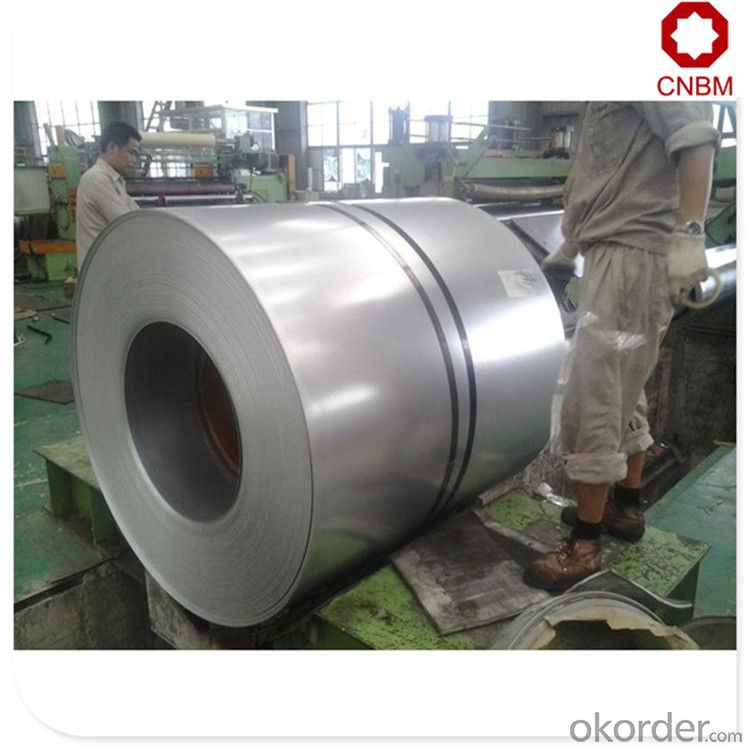
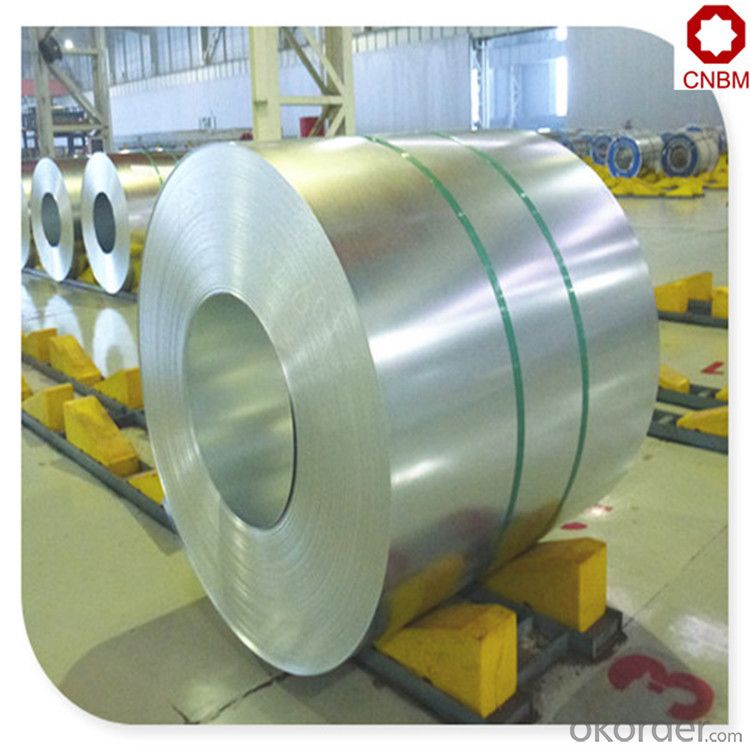

FAQ
Q: How do you guarantee the quality of your product?
A: Every process will be checked by responsible QC which insures every product's quality.
Q: How much is your delivery time?
A: Normally within 30 days of receipt of LC original or prepayment, but mostly according to the specific requirements or the quantity
Q: I need sample, could you support?
A: We can supply you with the sample for free, but the delivery charges will be covered by our customers. For avoiding the misunderstanding, it is appreciated if you can provide the International Express Account for Freight Collect. Also you can have a visit to us, welcome to CNBM!
Certificate:
CNBM International is highly recognized by its business partners and clients all over the world and has obtained rapid development under the spirit of win-win. We will carry on the mutual beneficial, innovative and revolutionary trading structure as we did before, create value for our employees, share holders and clients and benefit the whole society in our future development
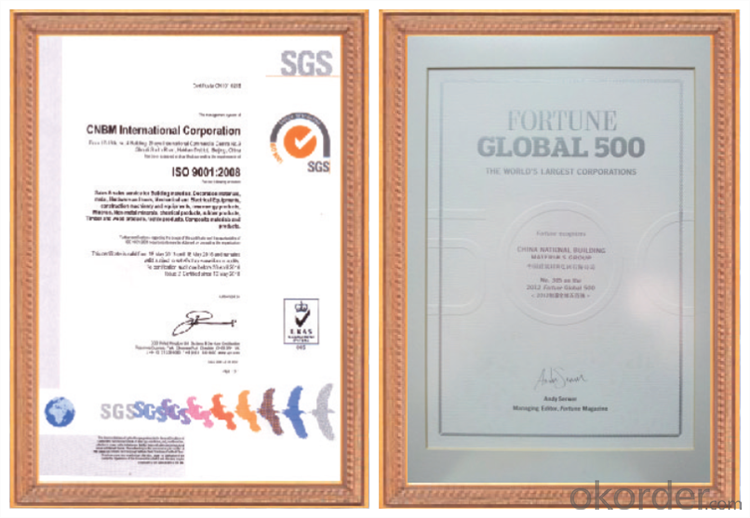
- Q: How are steel coils used in the manufacturing of automotive wheels?
- Steel coils are used in the manufacturing of automotive wheels as a primary material for the wheel rims. The steel coils are shaped, cut, and welded to create the desired size and design of the wheel rim. They provide high strength and durability, ensuring the wheels can withstand the weight of the vehicle and the impact of road conditions.
- Q: What is the average shelf life of a painted steel coil?
- The average shelf life of a painted steel coil can vary depending on various factors such as the quality of the paint, environmental conditions, and storage methods. However, on average, a well-maintained painted steel coil can have a shelf life of 10 to 20 years.
- Q: How are steel coils used in the production of metal cladding?
- Steel coils are used in the production of metal cladding as they are rolled into flat sheets and then formed into various shapes and profiles. These coils provide the raw material for manufacturing metal cladding panels, which are widely used in construction for their durability, weather resistance, and aesthetic appeal.
- Q: How are steel coils used in the production of industrial equipment?
- Steel coils are used in the production of industrial equipment as their versatile and durable nature makes them ideal for fabricating various components such as frames, structures, panels, and parts. These coils are processed and shaped into the required size and shape, allowing manufacturers to create sturdy and reliable equipment that can withstand heavy use and harsh environments.
- Q: Can steel coils be coated with anti-corrosive substances?
- Yes, steel coils can be coated with anti-corrosive substances. Coating the coils with anti-corrosive substances provides an additional layer of protection, preventing or slowing down the process of corrosion and extending the lifespan of the steel coils.
- Q: what do you think about producebility of low density steel? for example: can density of 1020 steel (or ony others) be decreased without any loss of other properties.
- If a material has a lower density than steel, then it isn't steel.
- Q: Can steel coils be used in the production of construction machinery?
- Indeed, the utilization of steel coils is applicable in the manufacturing process of construction machinery. Frequently, steel coils serve as the primary elements employed in the production of diverse components, including frames, chassis, gears, and structural parts for construction machinery. The exceptional strength and enduring nature of steel render it the perfect material for construction machinery, given its ability to withstand demanding operational conditions. Furthermore, steel coils offer effortless shaping, welding, and fabrication procedures to achieve the desired shapes and sizes, thereby providing customization and adaptability in the production of construction machinery.
- Q: How do steel coils contribute to the manufacturing of electrical equipment?
- Steel coils are used in the manufacturing of electrical equipment as they provide structural support and enhance the durability of various components. They are commonly used in transformers, motors, and generators, where they serve as the core material due to their magnetic properties. The steel coils help to create and maintain magnetic fields, ensuring efficient energy transfer and enhancing the overall performance of electrical equipment.
- Q: Hey everyone.I have a whetstone and a honing steel. I purposely tried to make one of my knives less sharp twice to see how well the whetstone and honing steel would work.It even seemed that when I was using my whetstone it wasn't as sharp as it was when I used my honing steel, but when I also used my honing steel after having sharpened my knife on the whetstone, it was razor sharp.I was wondering, is the whetstone only supposed to be used when the knife edge isn't as flat anymore or something? Like, only when it doesn't really have an edge anymore?Please explain your answer.Thanks everyone.
- In general, whetstones will actually remove metal in order to sharpen a blade, and the angle they're used at is important too. A steel will just straighten the blade between uses, not actually remove metal. The effect is to make it sharper than it was just before, but only because it's straighter. Using a knife makes the very thin edge kind of flatten or even fold over a bit, or get wavy, etc...so the steel just straightens it back out (imagine what happens when the very thin blade gets pressed down repeatedly on a cutting board, or even cuts through foods repeatedly). (A whetstone is used only when steeling finally just isn't enough to get the blade sharp as needed.) .
- Q: What are the different methods of coating steel coils?
- There are several different methods of coating steel coils, each offering unique benefits and applications. Some of the most common methods include: 1. Hot-dip galvanizing: This process involves immersing the steel coils in a bath of molten zinc. The zinc forms a protective layer on the surface of the steel, providing excellent corrosion resistance and durability. 2. Electro-galvanizing: In this method, a layer of zinc is applied to the steel coils using an electroplating process. It provides similar corrosion resistance to hot-dip galvanizing but with a thinner coating. 3. Electro-coating (E-coating): Also known as electrodeposition, this method involves immersing the steel coils in a bath of paint or resin containing electrically charged particles. An electrical current is applied, causing the particles to adhere to the surface of the steel. E-coating provides excellent corrosion protection and is often used as a primer before applying additional coatings. 4. Powder coating: Steel coils can be coated with a dry powder paint that is electrostatically charged and then baked onto the surface. This method offers a wide range of colors, finishes, and textures, providing both aesthetic appeal and corrosion resistance. 5. Organic coatings: These coatings, such as paints or lacquers, are applied to the steel coils using various techniques like spray, roller, or dip coating. Organic coatings provide protection against corrosion, as well as offering customizable colors and finishes. Each method of coating steel coils has its advantages and is selected based on the desired level of corrosion resistance, appearance, and specific end-use requirements.
Send your message to us
Galvanized steel coil z275 stander hot dipped
- Loading Port:
- China main port
- Payment Terms:
- TT OR LC
- Min Order Qty:
- 25 m.t.
- Supply Capability:
- 36782 m.t./month
OKorder Service Pledge
OKorder Financial Service
Similar products
Hot products
Hot Searches
Related keywords
